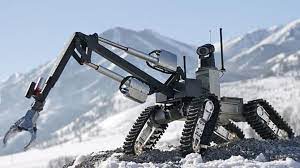
You may have heard of radio frequencies and already know about their use in radio and television broadcasting and Wi-Fi internet access. Here, you will learn about radio frequencies and their benefits for the military using GPS, RFID, and radio communication systems.
Radio frequencies include radio waves and microwaves. These relatively long wavelengths may travel long distances and bend around structures to avoid being blocked by them. They may even reach farther if you install repeaters on tall structures along the way to receive and retransmit their signals. And you may use RF splitters to receive radio frequency signals, split and amplify the signals, and output the same signals as multiple outputs, having them sent out in various directions to cover more terrain.
- GPS Systems
GPS long band frequencies are a range of radio waves used by global satellite navigation systems. Besides navigation, the military may use global positioning systems technology to synchronize time among everyone, locate and track assets and personnel, move into position, communicate and coordinate activities, their directions, speeds, locations, and time during day and night.
When soldiers know their GPS coordinates through handheld receivers, they may readily communicate their location information to facilitate receiving help when injured or ambushed. Knowing the GPS coordinates of an enemy may let the military know how far away the enemy is, survey for information, and coordinate response efforts. With GPS receivers, everyone’s clocks may be synchronized to the GPS atomic clocks for precision coordination. Pilots may fly their planes or unmanned aerial vehicles knowing exactly where they will head and easily find their targets. And ship captains and submarine pilots may more easily navigate the waters. The military may even inform soldiers of a nearby enemy by communicating the enemy’s GPS coordinates.
- RFID Systems
Radio-frequency identification systems use radio waves for real-time wireless tracking of assets and humans, data collection, item identification, and bulk identification through antennas, tags, and readers. A tag consists of a small integrated circuit that keeps information, an antenna that enables transmitting and receiving data, and an optional battery for power. Readers query tags, get information, provide on-screen output, and interface to a database system.
RFID systems may track, identify, and inventory vehicles and assets in real-time in the military. They may help with the logistics of distributing backpacks, weapons, clothing, meals, and communications gear.
- Radio Systems
Military personnel may communicate through encrypted radio wave frequencies across the land, air, and sea. Military audio and video communications, intelligence gathering, and command-and-control may use radio systems that have availability even when electricity is out in an area.







